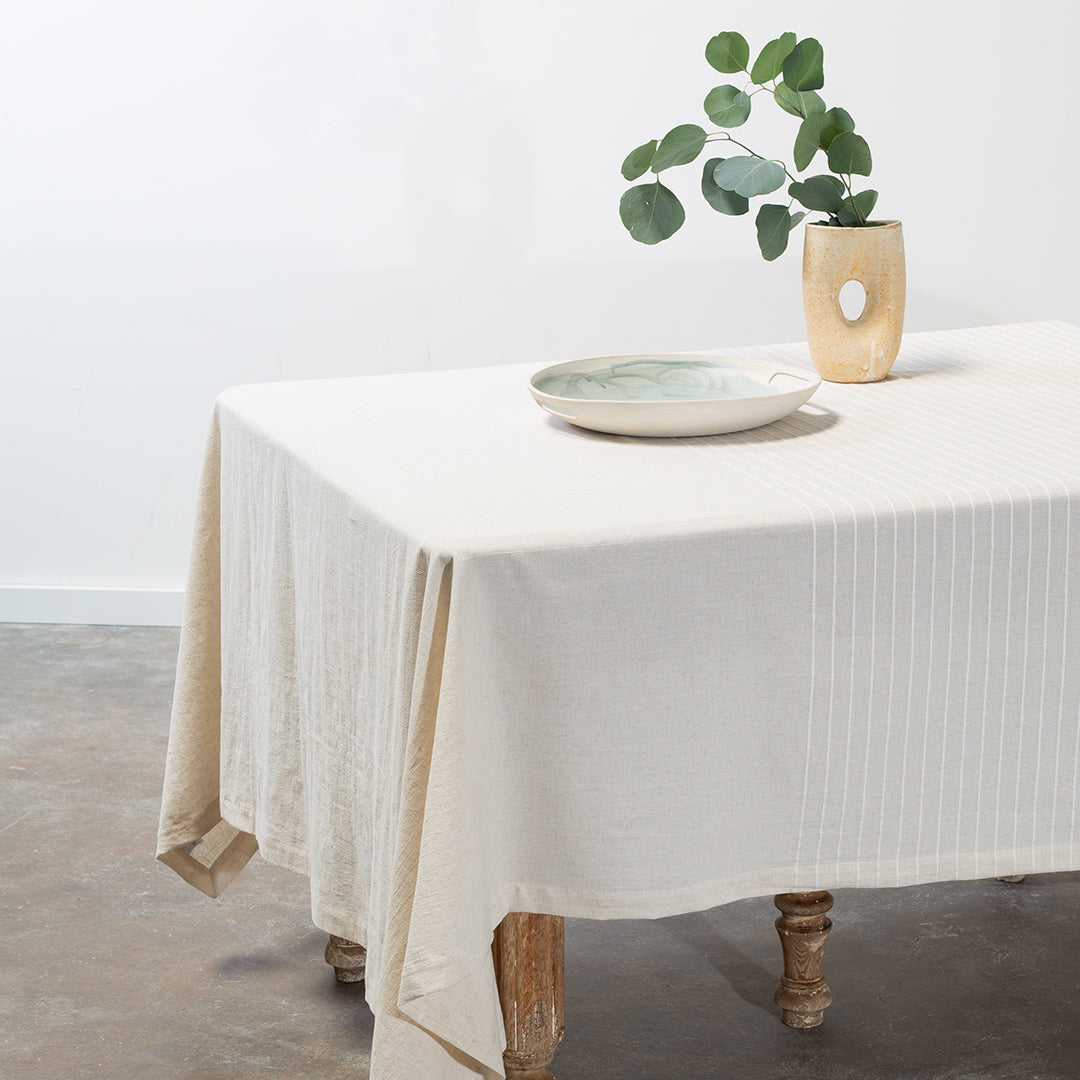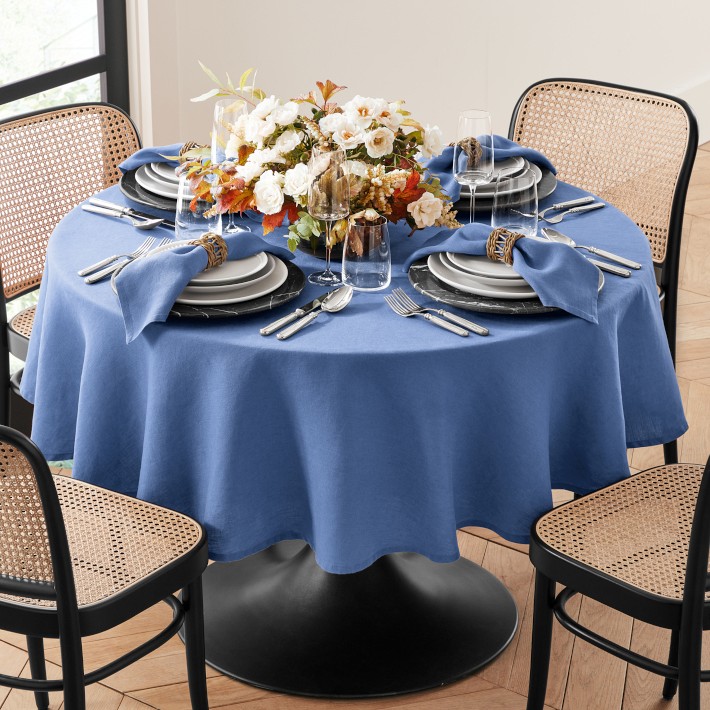How to Choose the Perfect Table Runner for Your Dining Table
How to Choose the Perfect Table Runner for Your Dining Table
Blog Article
Eco-Friendly and Sustainable: Why Bed Linen Fabric Is the Ultimate Selection for Conscious Consumers and Fashion Enthusiasts

Environmental Advantages of Linen
Linen fabric, known for its outstanding environment-friendly buildings, offers a range of ecological benefits that make it a sustainable option in today's garment industry. One of the key benefits of bed linen is its biodegradability. Unlike synthetic materials, bed linen decomposes naturally, reducing waste and ecological influence. In addition, linen manufacturing is much less water-intensive compared to other fabrics such as cotton, requiring fewer sources for cultivation. This element adds to water conservation and minimizes the stress on worldwide water products.
Moreover, bed linen is a sturdy fabric that can last for years, lowering the regularity of disposal and the demand for consistent redeeming. This durability not just benefits consumers by giving them with enduring items but also reduces the overall carbon footprint related to clothes production. Linen's all-natural fibers are additionally recyclable, making certain that at the end of its life cycle, the material can be repurposed or changed right into brand-new products, advertising a circular and sustainable strategy to style.
Adaptability in Style
With its varied variety of styling choices and adaptability to various events, bed linen textile has actually developed itself as a flexible option in the apparel industry. Linen's all-natural structure and breathable homes make it a popular choice for a vast range of garments products. From casual daily wear to more formal setups, linen can easily transition between various designs.
One of the essential reasons for bed linen's adaptability is its capacity to be spruced up or down depending upon the celebration. Linen tee shirts coupled with tailored pants create an advanced look appropriate for a supper or the office out, while linen shorts or dresses offer a trendy and kicked back design excellent for a day at the beach or a summer season barbecue. Additionally, linen blends well with various other fabrics, permitting innovative mixing and matching to attain distinct and personalized attire.
Whether it's an easygoing weekend break breakfast or a classy night occasion, bed linen fabric supplies fashion fanatics the adaptability to produce varied appearances that are both comfortable and stylish. Its classic charm and flexibility make linen a favorite option for conscious consumers wanting to make lasting yet classy options.
Sturdiness and Longevity
Flaunting remarkable durability and an amazing life expectancy, bed linen fabric attracts attention for its outstanding longevity and longevity in numerous discover this applications. table cloths. Linen fibers are understood for their toughness, making bed linen textile substantially more sturdy than cotton or other prominent textiles. This longevity guarantees that linen garments and home fabrics can endure regular deterioration, preserving their top quality for a prolonged duration
Because of its durable nature, linen is a lasting selection for conscious customers looking to buy top quality, classic items. The longevity of linen also contributes to minimizing the ecological impact related to frequent replacements, as less brand-new things need to be generated and much less waste winds up in landfills.
In enhancement to its resilience, linen actually comes to be softer and a lot more comfortable with each wash, improving its charm and comfort gradually. This special particular sets bed linen apart from other materials, as it remains to enhance with age, guaranteeing that linen pieces can be treasured and taken pleasure in for many years to come.
Bed linen's Comfort and Breathability
Linen material is popular for its comfort, making it a prominent option for bed linens, garments, and home textiles. recommended you read The all-natural fibers of linen are breathable and moisture-wicking, permitting air to move with the material quickly.
In addition, bed linen's capability to absorb dampness without holding bacteria makes it hypoallergenic and appropriate for delicate skin. table cloths. The textile's smooth and lint-free structure includes in its convenience, offering a luxurious feel against the skin. Linen's breathability additionally encompasses its use in home textiles like curtains and furniture, where it can produce a ventilated and fresh atmosphere in living rooms. In general, the comfort and breathability of linen make it a functional and practical selection for mindful consumers and fashion fanatics looking for both style and performance in their products.
Bed Linen as a Sustainable Choice

Moreover, the manufacturing process of linen is likewise more sustainable. Flax plants have high degrees of cellulose, making them simple to damage down and process without making use of severe chemicals. The entire flax plant is utilized in bed linen production, leaving almost no waste behind. Furthermore, linen is eco-friendly, unlike synthetic materials, meaning that at the end of its lifecycle, it will normally decompose without causing harm to the environment.

Conclusion
In conclusion, bed linen material sticks out as the ultimate choice for aware consumers and fashion fanatics due to its numerous ecological benefits, adaptability in vogue, toughness, breathability, durability, and comfort. Its sustainability makes it a sensible selection for those aiming to make environmentally friendly decisions in their garments purchases (table cloths). Picking linen is not just a fashionable option, but also a responsible one that lines up with the principles of sustainable style
Bed linen fabric, understood for its outstanding environmentally friendly buildings, offers an array of environmental benefits that make it a lasting choice in today's style market. Bed linen tee shirts coupled with tailored trousers create an visit the website advanced look suitable for a supper or the office out, while linen shorts or outfits supply a chic and loosened up design ideal for a day at the coastline or a summertime picnic. Linen fibers are known for their toughness, making linen textile substantially more long lasting than cotton or various other prominent textiles. Linen textile is popular for its comfort, making it a popular option for bed linen, home, and clothing fabrics.In final thought, bed linen textile stands out as the ultimate selection for mindful consumers and style fanatics due to its countless environmental advantages, flexibility in style, resilience, breathability, durability, and comfort.
Report this page